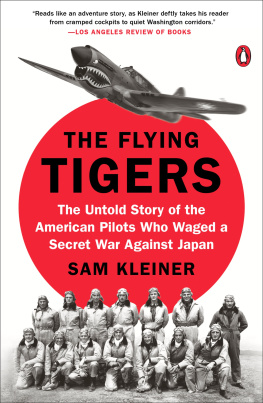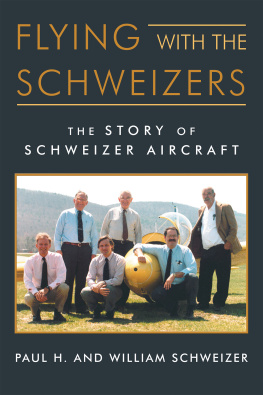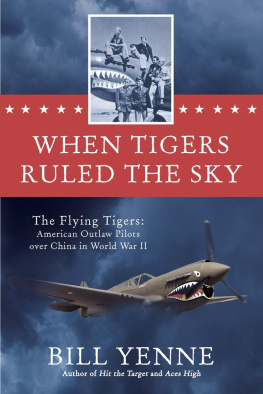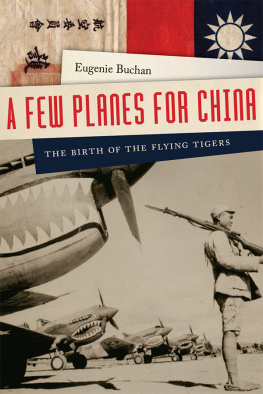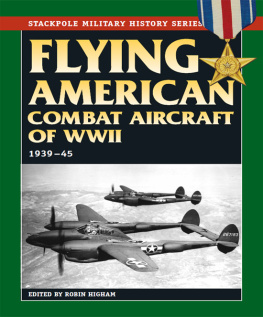William D. PaWley
OTHER TITLES FROM POTOMAC BOOKS
The Castro Obsession:
U.S. Covert Operations against Cuba, 19591965
by Don Bohning
The Meinertzhagen Mystery:
The Life and Legend of a Colossal Fraud
by Brian Garfield
Copyright 2012 Potomac Books, Inc.
Published in the United States by Potomac Books, Inc. All rights reserved. No part of this book may be reproduced in any manner whatsoever without written permission from the publisher, except in the case of brief quotations embodied in critical articles and reviews.
Epitaph on an Army of Mercenaries from Last Poems by A. E. Housman. Copyright 1965 by Henry Holt and Company, New York. Reprinted by permission of Henry Holt and Company, LLC.
Library of Congress Cataloging-in-Publication Data
Carrozza, Anthony R., 1942
William D. Pawley : the extraordinary life of the adventurer, entrepreneur, and diplomat who cofounded the Flying Tigers / Anthony R. Carrozza.1st ed.
p. cm.
Includes bibliographical references and index.
ISBN 978-1-59797-714-2 (hardcover : alk. paper)
ISBN 978-1-59797-719-7 (electronic edition)
1. Pawley, William D. (William Douglas), 18961977. 2. AmbassadorsUnited StatesBiography. 3. DiplomatsUnited StatesBiography. 4. United StatesForeign relations19451989. 5. United StatesForeign relationsLatin America. 6. Latin AmericaForeign relationsUnited States. 7. Flying Tigers (AVG), Inc. I. Title.
E748.P38C37 2012
327.2092dc23
[B]
2011042169
Printed in the United States of America on acid-free paper that meets the American National Standards Institute Z39-48 Standard.
Potomac Books
22841 Quicksilver Drive
Dulles, Virginia 20166
First Edition
10 9 8 7 6 5 4 3 2 1
CONTENTS
PART V Dominican Republic and Cuba
ACKNOWLEDGMENTS
The life of William Douglas Pawley was an adventure waiting to be written. One of the main sources of research material was in his own words. An autobiography he was working on was never published, but it holds a fount of information and offers insight into his thoughts. I am grateful for two sources of the manuscript. Richard Tryon, who was working diligently on putting the manuscript into a readable form, provided me with one version. The second version is in the archives at the George Marshall Library in Lexington, Virginia.
When I obtained the photograph of the dedication of Rancho Boyeros Airport in Cuba, I could identify only two people in the picture. George G. Farias identified everyone in the photo, for which I am deeply indebted. Eugenie Buchan, who is presently working on a doctoral dissertation about airpower and Sino-American relations during the period between the World Wars, not only provided me with a selection of photographs, she also identified the people in the photograph of the CAMCO Loiwing factory opening.
The interlibrary loan system enabled me to tap into a wealth of sources. I was able to receive microfilm reels of the Miami Herald and the Miami Daily News as far back as the 1920s. Books from practically every library in the country, as well as graduate thesis manuscripts and monographs, were provided through the Steele Memorial Library in Elmira, New York. I wish to thank Owen Frank, Maria Rupp, Rose Woodard, Cola Thayer, and Pat Cuthbert at the Steele for the extra effort each made to fill my many requests.
The presidential librariesHoover, Roosevelt, Truman, Eisenhower, Kennedy, and Nixonprovided me with material essential to this book. The James Marshall McHugh Papers at Cornell University were invaluable in presenting an unbiased portrait of the aviation business in China.
PART I
Fledgling Entrepreneur
1
An Adventurous Early Life
Before the end of World War II, the U.S. government reached the conclusion that an effective intelligence-gathering service was vital for the nations security. The Office of Strategic Services (OSS) served that purpose during the war, but now it was deemed necessary to establish a permanent and well-funded organization. Congress approved the Central Intelligence Agency (CIA) as the entity to gather intelligence, interpret data, and make recommendations of policy to negate effectively foreign countries subversive activities.
During the postwar years the power granted to the agency began expanding, and its original purpose seemed to have been forgotten. Covert activities against other countries, dossiers compiled on U.S. citizens and foreign nationals, illegal wiretapping, and the reading of private mail became commonplace CIA practices. The boundaries established at its formation began to be pushed beyond mandated congressional and presidential limits.
In 1954, Congress established the Commission on Organization of the Executive Branch of the Government (known as the Hoover Commission), with one of its assigned duties to study the organization and operations of the CIA. Its members were to review methods of agency operations and make recommendations to reduce expenditures, eliminate duplication of services, define the responsibilities of agency officials, and consolidate functions for more effective performance. As the commission began its work, President Dwight D. Eisenhower ordered Director of Central Intelligence Allen W. Dulles to form a separate panel of consultants to review CIA covert activities.
Fearful that the Hoover Commission would uncover embarrassing activities, Eisenhower directed the panel to undertake a comprehensive study of the CIAs
Lt. Gen. James H. Doolittle, who led the first bombing raid of Tokyo during World War II, headed the panel. Indications suggest that Eisenhower, and not Dulles or Doolittle, appointed the panels other three members. One of the members was William Birrell Franke, a Wall Street wizard who was serving as assistant secretary of the navy on financial matters and would later be appointed secretary of the navy during the period when planning of the Bay of Pigs operation began. The second member was Morris Hadley, chairman of the board of the Carnegie Corporation, whose law partner, John J. McCloy, would later serve on the Warren Commission investigating the death of John F. Kennedy. In 1967 Hadleys family Rubicon Fund would be revealed as a conduit of CIA funds. The third appointee was William Douglas Pawley, a former ambassador to Peru and Brazil, a personal friend of Eisenhower s, and a self-made millionaire businessman.
The Doolittle Group, as the panel became known, held its first meeting on July 14, 1954, at CIA headquarters, where the CIA director and key members of his staff briefed the groups members on problems they felt needed attention. Subsequent meetings included briefings by the Departments of Defense (DOD) and State, the Federal Bureau of Investigation (FBI), the Bureau of the Budget, the three armed services, and the Atomic Energy Commission (AEC). All paperwork was kept within the immediate office area; all working copies, files, and records were either destroyed or returned to their source; and no archives were developed. On September 30, 1954, the groups sixty-nine-page report was sent to President Eisenhower.
A White House press statement on information contained in the report concluded that the CIA was doing a creditable job, but there were areas in which administration and operations can and should be improved. The secret report made several recommendations to raise the competency level of CIA covert operations. The suggestions were aimed at the core of the CIAs function:
Elimination of personnel who can never achieve a sufficiently high degree of competence to meet the CIA standard. This will entail a substantial reduction in present personnel. There is no place in CIA for mediocrity.
Next page

